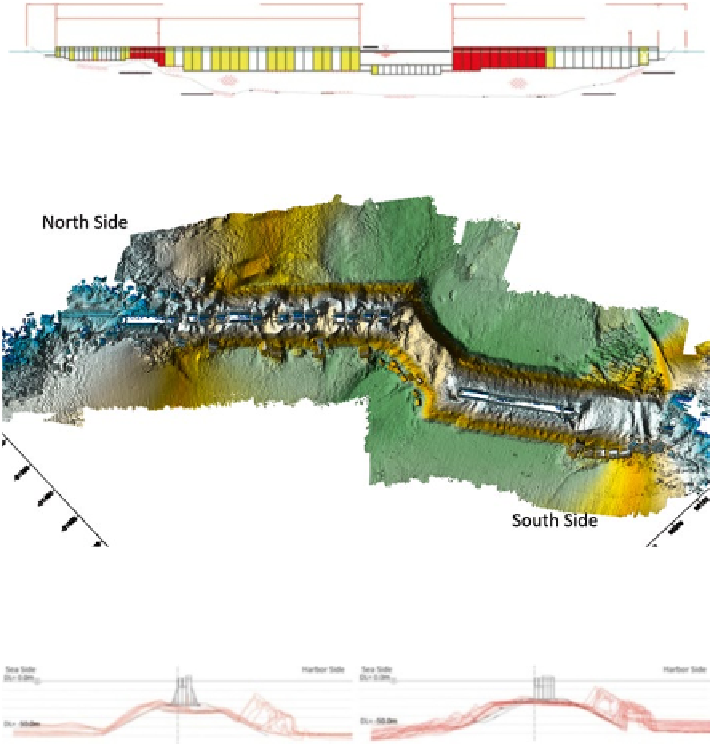Environmental Engineering Reference
In-Depth Information
94.0m
90.0m
Shallow Region 91.8m
North Side 990.0m
Opening 302.2m
South Side 670.0m
Shallow Region
335.3m
Deep Region 654.7m
Deep Region 578.2m
+6.0m
L.W.L 0.0m
No. 4
No. 8
-19.0m
-30.0m
-30.0m
-60.0m
-60.0m
Fig. 14.3
Stateofdamagetocaissons(
Red
: undamaged,
Yellow
: inclined,
White
:fallen)(Source:
Tohoku Regional Development Bureau; Japan)
Fig. 14.4
Stateofdamage(Narrowmulti-beammeasurementresults)(Source:TohokuRegional
Development Bureau; Japan)
Fig. 14.5
Stateofbreakwaterdamageinthedeepregion(Source:TohokuRegionalDevelopment
Bureau; Japan)
inclined,and6wereundamaged.Ofthe6undamagedcaissons,frictionincreasing
matswereplacedon5.Atthebaymouth,ofthe13submergedbreakwaters,only1
of the 13 remained; the rest fell. At the south side, of the 19 deep caissons, 8 were
washed away, 1 was inclined, and 10 were undamaged, and in the shallow region, 2
were washed away and 1 was inclined. The state of damage of the overall breakwa-
ter structure is shown in Fig.
14.4
. At the north side breakwater many sections slid,
thenfellwithoutoverturning,whileoftheSouthsideBreakwaters,sectionscloserto
thesurvivingcaissonsoverturnedaftersliding.Overall,atpartsoftheshallowsec-
tion where friction was not increased, sections of the breakwater either fell or were
inclined, while in the deep section, roughly half of the breakwater fell, and at the
north side breakwater, sections that remained were also inclined. Figure
14.5
shows

Search WWH ::

Custom Search